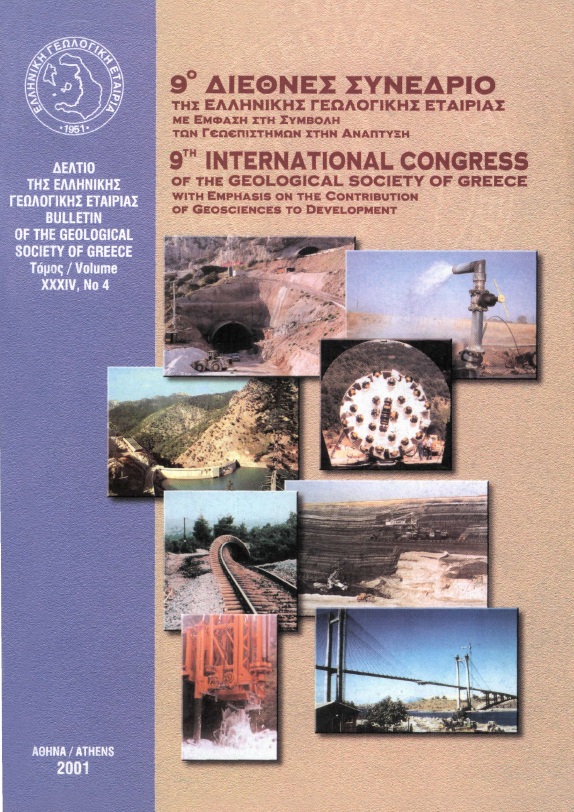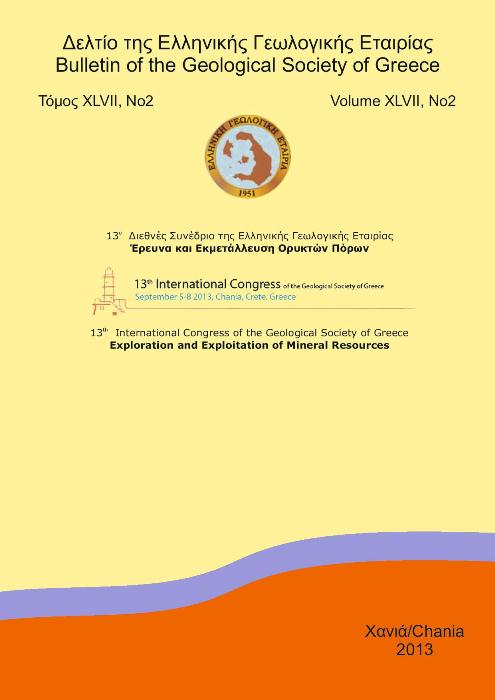Paleoseismological investigations along the Kera fault zone, Western Crete: implications for seismic hazard assessment
Περίληψη
The island of Crete is the principal landmass in the Aegean arc system. Collision of the Euroasian plate in the north and the African plate in the south gives rise to the subduction related deformation along the Hellenic arc. As a result of the complex deformation, the area is characterized by high seismic activity. Paleoseismic investigations performed along the Kera fault scarp, which is part of a N-S oriented fault system along the Spatha peninsula (NW-Crete), show clear evidence of repeated normal faulting events. Five distinct episodes of faulting are observed. The first two are probably of Middle-Miocene or younger age representing older tectonic episodes, whereas the last three indicate co-seismic displacements most likely during the Pleistocene and Holocene. This is in good agreement with the previous estimates of Holocene average slip rate and the recurrence time estimate of large earthquakes in the order of ca. lmm/yr and 3000yrs, respectively. The Kera fault represents a NE-SW oriented bend in a N-S fault system and therefore has a minor left-lateral strike-slip component. During the 1980's at least three earthquakes could be associated with the Kera fault. More recently, in 1999, there were three small (with magnitudes between 3.0-4.5) offshore events that are probably associated with the same fault system in the offshore extension (to the north) of the N-S oriented faults along the Spatha peninsula. The existence of these earthquakes as well as the recent paleoseismic results clearly demonstrates the need of revising the seismic hazard assessment of the area. The length of the N-S oriented fault system, where the Kera fault represents the middle segment, reaches to a total of 30 km., and is capable of generating an earthquake of magnitude in the range 6.0-6.7. Such a (shallow) earthquake occurring at a short distance to the densely populated north-western coast of Crete is likely to have significant consequences.
Λεπτομέρειες άρθρου
- Πώς να δημιουργήσετε Αναφορές
-
MOUSLOPOULOU, V., ANDREOU, C., ATAKAN Κ., & FOUNTOULIS, I. (2001). Paleoseismological investigations along the Kera fault zone, Western Crete: implications for seismic hazard assessment. Δελτίο της Ελληνικής Γεωλογικής Εταιρείας, 34(4), 1531–1537. https://doi.org/10.12681/bgsg.17259
- Ενότητα
- Σεισμολογία

Αυτή η εργασία είναι αδειοδοτημένη υπό το CC Αναφορά Δημιουργού – Μη Εμπορική Χρήση 4.0.
Οι συγγραφείς θα πρέπει να είναι σύμφωνοι με τα παρακάτω: Οι συγγραφείς των άρθρων που δημοσιεύονται στο περιοδικό διατηρούν τα δικαιώματα πνευματικής ιδιοκτησίας επί των άρθρων τους, δίνοντας στο περιοδικό το δικαίωμα της πρώτης δημοσίευσης. Άρθρα που δημοσιεύονται στο περιοδικό διατίθενται με άδεια Creative Commons 4.0 Non Commercial και σύμφωνα με την οποία μπορούν να χρησιμοποιούνται ελεύθερα, με αναφορά στο/στη συγγραφέα και στην πρώτη δημοσίευση για μη κερδοσκοπικούς σκοπούς. Οι συγγραφείς μπορούν να: Μοιραστούν — αντιγράψουν και αναδιανέμουν το υλικό με κάθε μέσο και τρόπο, Προσαρμόσουν — αναμείξουν, τροποποιήσουν και δημιουργήσουν πάνω στο υλικό.










